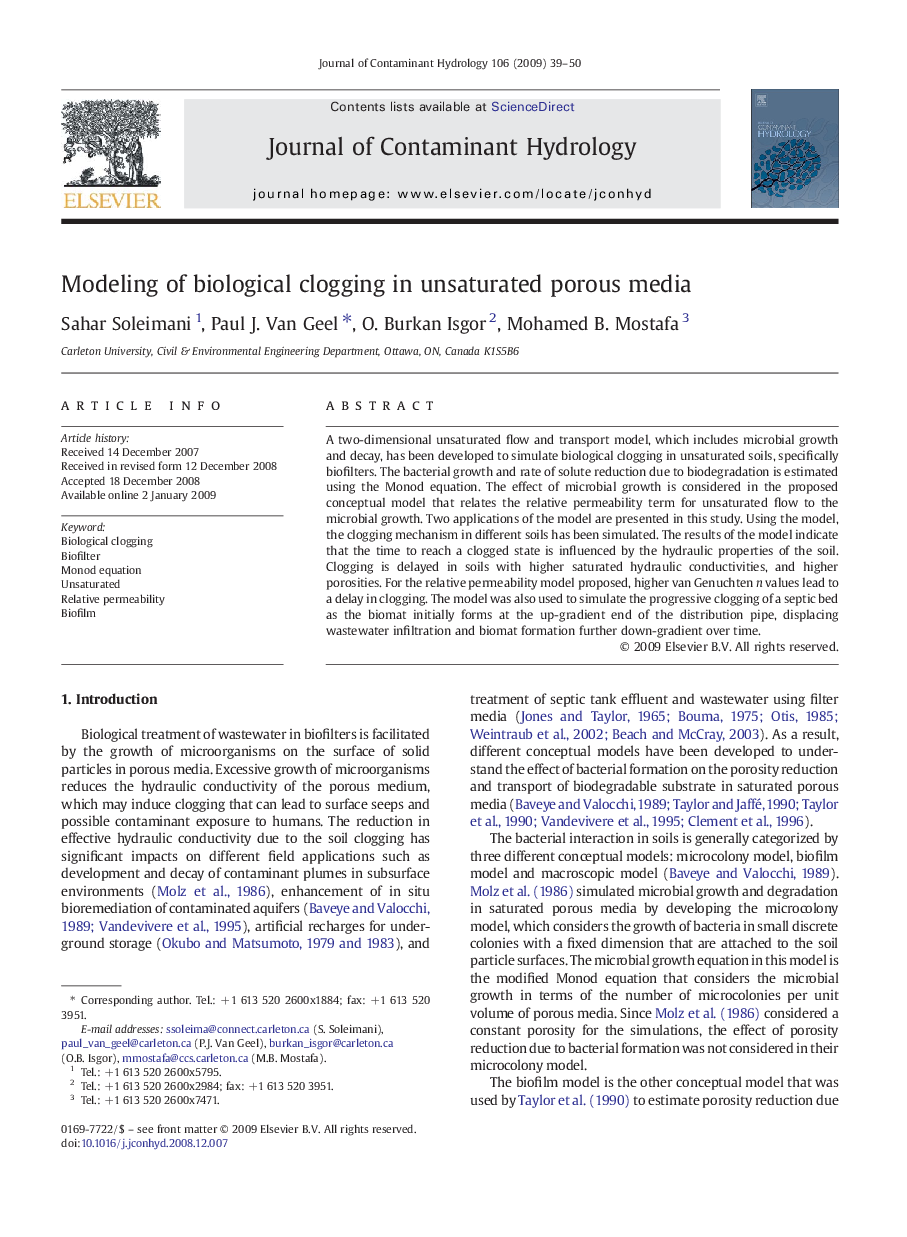| Article ID | Journal | Published Year | Pages | File Type |
|---|---|---|---|---|
| 4547256 | Journal of Contaminant Hydrology | 2009 | 12 Pages |
A two-dimensional unsaturated flow and transport model, which includes microbial growth and decay, has been developed to simulate biological clogging in unsaturated soils, specifically biofilters. The bacterial growth and rate of solute reduction due to biodegradation is estimated using the Monod equation. The effect of microbial growth is considered in the proposed conceptual model that relates the relative permeability term for unsaturated flow to the microbial growth. Two applications of the model are presented in this study. Using the model, the clogging mechanism in different soils has been simulated. The results of the model indicate that the time to reach a clogged state is influenced by the hydraulic properties of the soil. Clogging is delayed in soils with higher saturated hydraulic conductivities, and higher porosities. For the relative permeability model proposed, higher van Genuchten n values lead to a delay in clogging. The model was also used to simulate the progressive clogging of a septic bed as the biomat initially forms at the up-gradient end of the distribution pipe, displacing wastewater infiltration and biomat formation further down-gradient over time.
